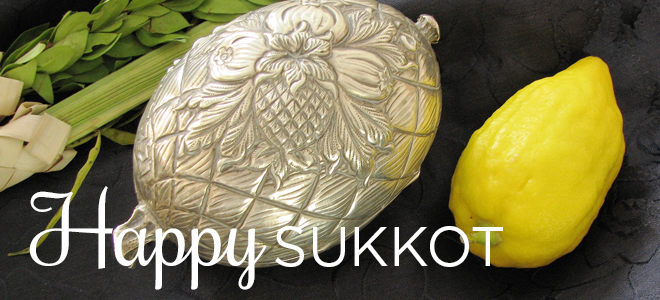09/25/2015
A D'var Torah on Sukkot 5776
- Share This Story


By Susan Hyman
Jewish Volunteer Network Director
The following d’var torah was presented at the Jewish Federation of Cleveland’s All-Staff meeting on September 24, 2015.
This Sunday evening begins the festival holiday of Sukkot which lasts for 8 days—culminating on the 8th day with Shemini Atzeret and followed on the 9th day by Simchat Torah.
Sukkot, or the Feast of Tabernacles, is one of the three pilgrimage festivals meaning that when the Temple stood in Jerusalem, Israelites would make a pilgrimage to the temple.
The holiday is referenced in several places in the Torah including Parsha Re’ei where it is written: “The Feast of Tabernacles you shall keep seven days…And you shall rejoice in your feast…and you shall be extremely joyful.”
And in a passage in Parsha Emor it is also written: “You shall dwell in booths seven days….that your generations may know that I made the children of Israel to dwell in booths, when I brought them out of the land of Egypt.”
In addition, in the Book of Bamidbar (Numbers) we are also commanded to hold together and wave the Arba Minim, also known as the Four Kinds, in all directions. It says: And you shall take for yourselves on the first day the fruit of citron tree—the Etrog, unopened frond of the date palm, myrtle branches and willow branches that grow near a brook.
So what does all of this mean?
During the 40 years that the Children of Israel wandered in the desert we lived in Sukkot (booths/huts). The Sukkah itself is based on these huts, also known as the clouds of glory that G-d surrounded us with in the desert. Sukkot highlights the idea of G-d's protection, and caring for all of us.
Today we eat, learn Torah, and some sleep in the Sukkah. The common practice is to have meals in the Sukkah.
On each day of the festival (except Shabbat), we take the Four Kinds, recite a blessing over them, bring them together in our hands and wave them in all six directions: right, left, forward, up, down and backward. Our sages in the midrash tell us that the Four Kinds represent the various types and personalities that comprise the community of Israel, whose intrinsic unity we emphasize on Sukkot.
There are many mystical meanings about waving these 4 species together which include: The Almighty controls the entire world, the wind, the forces of nature, everything everywhere, and all Jews are bound together as one people—whether pious or sinners
Another explanation is that the four species represent 4 types of people:
- Etrog/lemon: Has a pleasant aroma and taste. This symbolizes those knowledgeable in Torah who perform good deeds
- Lulav/palm branch: Has a pleasant tasting fruit but no aroma. And represents those who are learned but perform no good deeds
- Hadasim/myrtle: Has a pleasant fragrance but has no fruit representing those who perform good deeds but are not learned in Torah
- Aravot/willow: Has neither fruit nor fragrance and represents those who are unlearned and do not perform good deeds
Rabbi Abraham Isaac Kook, the first Ashkenazi chief rabbi of the British Mandatory Palestine, and a renowned Torah scholar, believes that the four species represent the diversity of the Jewish people and that the major theme of Sukkot is about community and coming together. His belief is that the entire people of Israel will sit in a single Sukkah together. This relates directly to the symbolism of the arba minim, the Four Kinds that highlight the diversity of the Jewish people.
These important concepts have a direct correlation to our work at the Jewish Federation:
- We bring the community together such as those that are affiliated and those unaffiliated, reform, conservative, orthodox, or I’m just Jewish.
- We bring together our donors and staff who work tirelessly for the good of the community
- We bring together hundreds of volunteers who work on campaign and dozens of other projects, many through the Jewish Volunteer Network that support the well-being of our community
- We are here and provide sustenance for the needy and vulnerable in our community: the frail elderly, unemployed, women who need shelter, Holocaust survivors and the list goes on…
And as my someday-will-be renowed son-in-law, Rabbi David Teller of Fuchs Mizrachi School explains and I quote “Sukkot is about community and the Jewish people coming together. All of Sukkot is reconnecting our people to nature, the physical world around us, and asking us how we can make the world around us a better place to be”.
Indeed, the Jewish Federation of Cleveland is a Sukkah that serves as an umbrella and brings together the diversity of our Jewish community here in Cleveland.


Comments